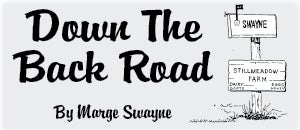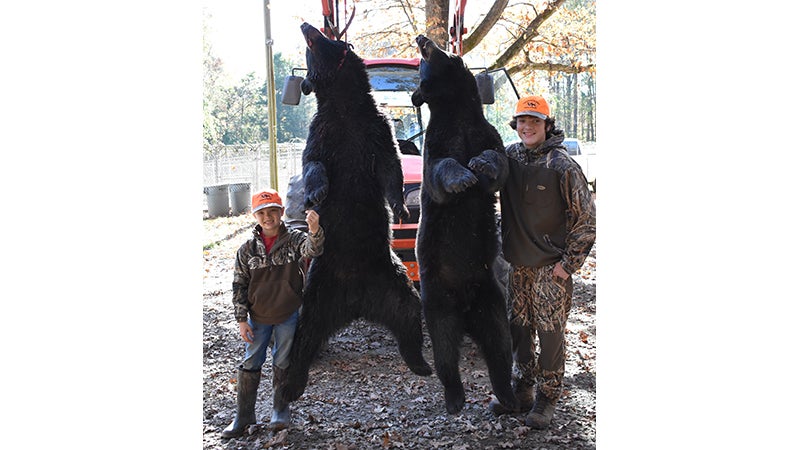Woolly Worm Weather
Published 4:10 pm Thursday, October 11, 2012
It's been a crazy year for weather, and whether we like it or not we pretty much have to take what comes along.
This past week has been a case in point. On Monday morning it felt like we'd skipped over fall and gone right into winter. Yet last Saturday we enjoyed a mid-summer's day dream – full of sunshine and temperatures in the mid-80s.
This year, in fact, has followed a pattern of not-so-predictable weather patterns. What are weather forecasters to do when the weather seems to have a mind of its own? Many of them are probably asking the same thing we are – what does the winter hold in store?
In the country we don't need to tune in the Weather Channel – we channel our curiosity about the weather into careful observation.
The Old Farmer's Almanac says it well, “Nothing in the universe occurs haphazardly: there is a cause and effect pattern to everything, including weather.”
In other words, you won't be barking up the wrong tree if you ask the ones who live in that tree what's in store. Squirrels, hoot owls, and even caterpillars all have opinions when it comes to forecasting.
Squirrels in particular have a lot to say about the weather. When a bad winter is coming they build nests lower in the trees and grow bushier tails. Early nut gathering also indicates that the winter will be severe.
You might think that owls don't give a hoot about the coming winter, but apparently they do. If hoot owls call late into the fall and screech owls sound like a woman crying, we might be included to follow suit. The winter will be a bad one.
Other birds have something to say about the weather as well. Birds on a telephone wire presage a coming storm, as do chattering redbirds and bluebirds. If a goose honks high it will be fair; if it honks low, a storm is on the way.
Generally the more vocal barnyard fowl are the more likely the chance of rain or snow.
Conversely, when locusts sing the air will be warm and dry.
Cockroaches are more active before a storm (do we really want to know that), crickets are lively, ants are busy, gnats bite, spiders come out of their nests, and flies gather inside the house.
Animals, both domestic and wild, offer more clues to winter's climatic changes.
Bears grow heavier coats earlier in the season before a severe winter (find a bare bear and you can cancel that trip to Florida!).
Horses run faster before a storm, and bulls lead the cows out to pasture. If the cows lead the way, the weather will be uncertain. Just before a storm breaks, however, all cows lie down and refuse to go out in the pasture.
If you really want to clinch a long range forecast, catch a rabbit and check the fur between his toes. If the rabbit is wearing furry “socks” you will probably need some too before winter is over.
Wooly socks might indeed be in order after the woolly worm caterpillar has his say. Woolly worms are well known for their weather predictions. There is, in fact, a Woolly Worm Festival every year in October in Banner Elk, North Carolina.
According to folklore, woolly worms are living proof that Mother Nature offers clues about our weather before it arrives. We're inching toward a bad winter if the woolly worms have a heavy coat and a wide black band around their middles. Even more specific, if you see a woolly worm parade before the first frost, winter storms will be lining up right behind them.
When will that first frost occur?
The first frost of autumn will be exactly six months after the first thunderstorm of spring, and if frost comes before November 23 the winter will be an especially bad one. And remember this – clear moon, frost soon! Two frosts and lots of rain mean cold weather is near.
A killing frost will come three months after the katydid begins “hollering.” If that isn't enough to bug you, expect frost when crickets get into the chimney.
Trees and plants are also prognosticators. The summer before a severe winter, carrots grow deeper, grapes and apples mature earlier, sweet potatoes have a thicker skin, and onions grow more layers. A heavier than usual crop of acorns (have you looked outside lately) means a bad winter, and trees will keep their green leaves later in the fall when the winter ahead is cold and snowy.
Even the moon has a place in the winter forecast. The number of days old the moon is when the first snow falls tells how many snows will follow that winter.
So what do you think – do we really need the Weather Channel?
This year at least I would say we're better off tuning into Mother Nature. After all, she's the one holding the “remote.”






